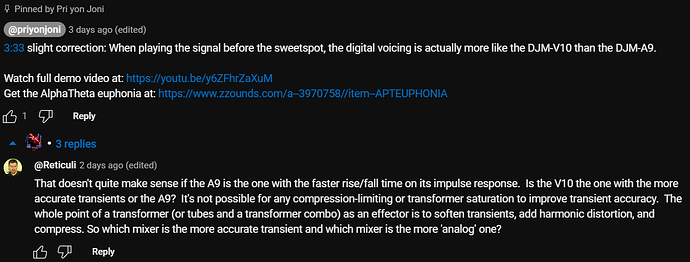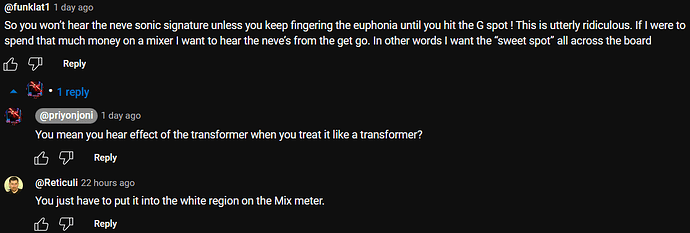The analog input headroom’s usually generous on all these fixed-input-gain opamp & ADC stages that have been in use on digital DJ mixers since like 2001 at Numark, and then later Denon DJ and Rane. Not a big deal or new. Pioneer moved to it with the V10 onward. I personally didn’t hate the old way, especially since they finally got around to the channel analog domain “Clip” indicators on the NXS2, but I guess it’s just another way to simplify and dumb down usage. Welcome to the fold, Pioneer DJ.
All floating point mixers have an insane amount of DSP headroom, which is where the virtual mixbus is on the Euphonia. You can basically crank up anything prior to an output (assuming the inputs are fixed-gain) as far as you want as long as you come back down to reality somewhere later. Not of super enormous benefit on a live mixer and outside of a DAW or audio file, but not a bad feature. On the DB4, they only have an extra 8 bits of headroom on the effects section over the rest of the fixed point gain structure, and no one complains. The iLive & dLive throughput latency also usually beats the pants off floating point.
The Trans Send, though, is not virtual, and relies on a DAC → analog transformer → ADC. I was expecting they’d just send the analog master output into the transformer after the digital master level control, or maybe even utilize an analog mixbus with a ton of DACs piped into a balanced bus or something, and then that piped into the transformer. That would have been a heck of a marketing point: digital mixer with analog sum box and transformer effector. I guess they really wanted the transformer sound on the USB out, and wanted the mixbus, headphone section, and master out stuff all still digital domain.
All they did is start the red band on the master meter and red highlighting text above it earlier, so it goes “red” sooner. Pretty ugly, useless master meter, IMO.
However, I don’t disagree with them leaving a master limiter out of the Euphonia, as I don’t think those should be used outside of a studio. So they’ve followed Rane on the fixed input gain section, and now with the lack of master out limiter.
They’re still screwing around with boost over unity on the digital domain master level control, though, and after they changed to sourcing the headphone master from before the master level control. At least on the Denon DJ digital mixers, you’ve usually been able to pad that down so unity can be max on the master level.

Anyone see comments from me on this thread?
Update:
Talked to one of the product devs.
Main isolator does not currently have iso bypass.
Unity on the bottom channel rotary volumes is accidentally not 7, but may be somewhere between 7 and 10 right now… like 8.5. Alpha Theta product dev expects this can be fixed later in firmware. I tried to convince him that they should move back to the old method since the DJM-1000/800 rotary kits that they abandoned with the V10 onward where the headphone master feed is either after the Master Level or even an option to make the headphone master feed pre or post Master Level, but I don’t believe I was successful.




